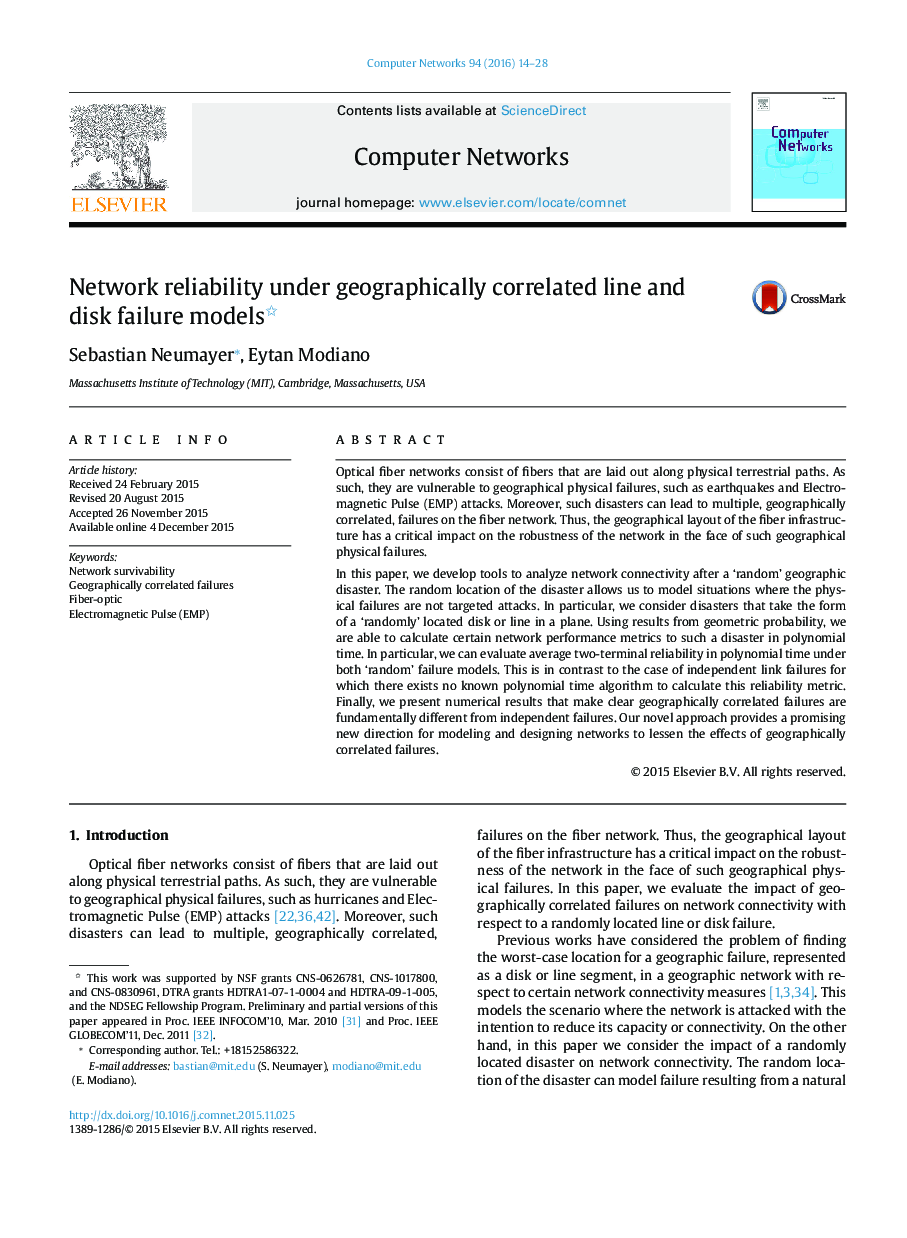| کد مقاله | کد نشریه | سال انتشار | مقاله انگلیسی | نسخه تمام متن |
|---|---|---|---|---|
| 452794 | 694618 | 2016 | 15 صفحه PDF | دانلود رایگان |

Optical fiber networks consist of fibers that are laid out along physical terrestrial paths. As such, they are vulnerable to geographical physical failures, such as earthquakes and Electromagnetic Pulse (EMP) attacks. Moreover, such disasters can lead to multiple, geographically correlated, failures on the fiber network. Thus, the geographical layout of the fiber infrastructure has a critical impact on the robustness of the network in the face of such geographical physical failures.In this paper, we develop tools to analyze network connectivity after a ‘random’ geographic disaster. The random location of the disaster allows us to model situations where the physical failures are not targeted attacks. In particular, we consider disasters that take the form of a ‘randomly’ located disk or line in a plane. Using results from geometric probability, we are able to calculate certain network performance metrics to such a disaster in polynomial time. In particular, we can evaluate average two-terminal reliability in polynomial time under both ‘random’ failure models. This is in contrast to the case of independent link failures for which there exists no known polynomial time algorithm to calculate this reliability metric. Finally, we present numerical results that make clear geographically correlated failures are fundamentally different from independent failures. Our novel approach provides a promising new direction for modeling and designing networks to lessen the effects of geographically correlated failures.
Journal: Computer Networks - Volume 94, 15 January 2016, Pages 14–28